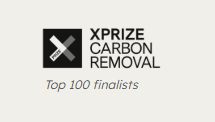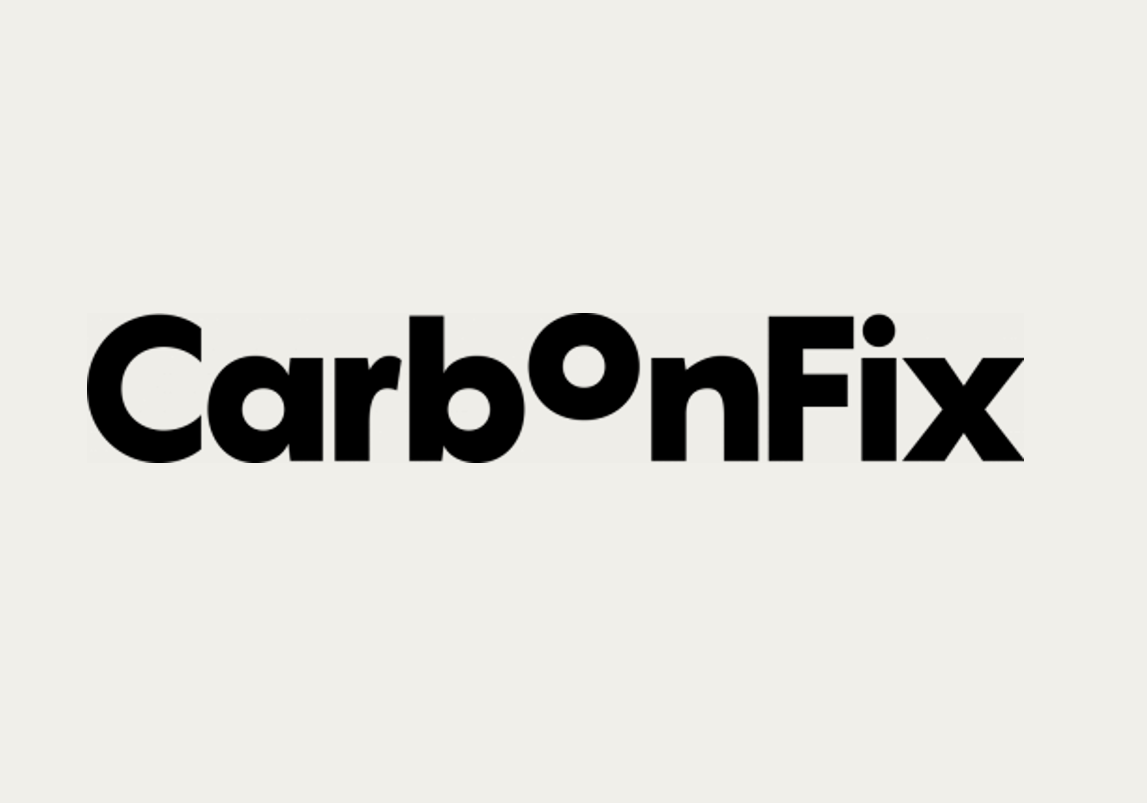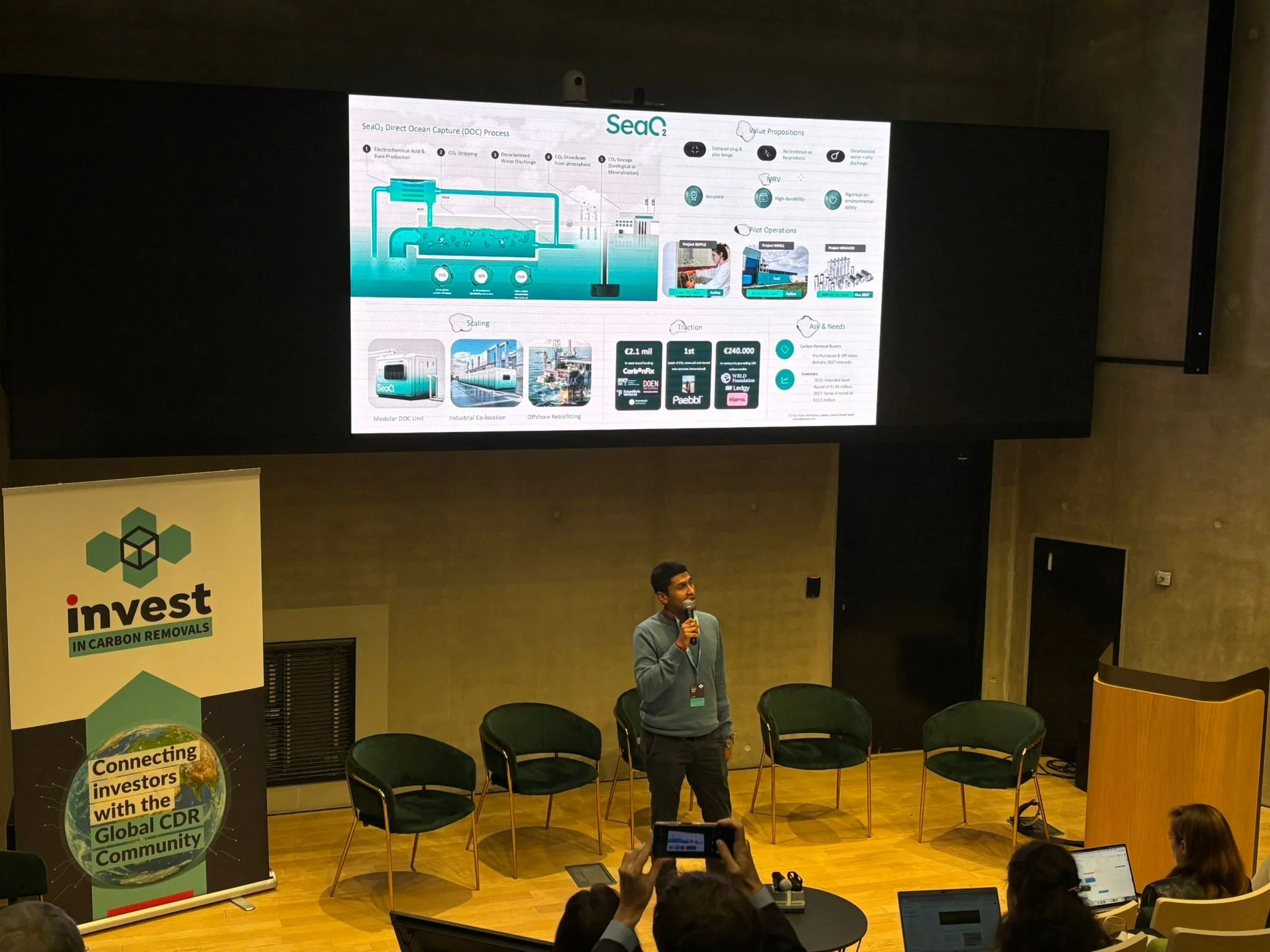
Giga-ton scalable Carbon Dioxide Removal Technology
Our Ocean’s Carbon Removal Power
The ocean is a massive sink for CO₂ as over a quarter of all CO₂ emissions ends up in the ocean. Since the industrial revolution, the excess amount of CO₂ in the air has led to ocean acidification. The concentration of (dissolved) carbon in the ocean is more than 100 times higher than in the air. This makes the ocean a powerful source for CO₂ removal.
Electrochemical Direct Ocean Capture (DOC)
Direct Ocean Capture relies solely on renewable electricity and seawater to extract CO₂ from the surface of seawater and consequently from the atmosphere. The process uses electrochemistry and vacuum to alter the carbonate equilibrium of the existing dissolved carbon in water to enable CO₂ extraction in gas form, which is then permanently stored in geological formations or put into products such as mineralized concrete. We return the decarbonized water to the surface of the ocean, where it re-absorbs CO₂ from the atmosphere, bringing balance to climate and battling ocean acidification.
Our Products
The removed CO₂ can be stored away in a permanent way (Carbon Dioxide Removal, CDR), or it can be used/ converted to chemical/ fuels (Utilisation)
We remove and store CO₂ and sell carbon credits to compensate for irreducible emissions
CDR
The removed carbon can be stored permanently by sequestering it in underground geological formations or by mineralizing it into concrete. We will be partnering with European based storage parties to store our first tons of removed CO₂. We offer high quality carbon credits to neutralize your company's (irreducible) emissions. Neutralize your company’s emissions or become a storage partner.
Blue CO₂ as a valuable resource
Utilisation
The removed carbon does not need to be seen as a waste product but rather as a valuable resource. Applications can be pivotal contributions in decarbonizing hard to abate industries. CO₂ can be used directly (for example: food, beverages, packaging, agriculture) or it can be converted into alternative fuels (e.g., green methanol), chemicals (e.g., ethylene, alcohols, formic acid, formate, syngas, urea) and other organic materials. Order your green CO₂ here.
Our latest news
-
CDR is necessary for net-zero CO₂ emissions. To limit climate change, the concentration of CO₂ in the atmosphere needs to be decreased fast. In addition to avoiding/reducing additional emissions, we need to remove (the already existing) CO₂ from the atmosphere. Net zero means huge declines in the use of coal, oil and gas. However, even if 90 % of the world’s energy comes from renewable sources by 2050, we still need 10.000.000.000 tons of CO₂ removal per year to reach net zero.
-
Oceans absorb over 25% of the emitted CO₂. The oceans hold over 100 times more CO₂ per liter (in dissolved state) than a liter of air and also acts as a natural CO₂ absorbent from the atmosphere. Much less volume of the ocean’s surface needs to be treated compared to DAC for the same amount of CO₂ removal. With oceans covering 70% of the Earth's surface, leveraging this vast and abundant resource as input significantly facilitates CDR.
-
We do not introduce any chemicals and only remove dissolved inorganic carbon (DIC) as gaseous CO₂. After DIC removal, the decarbonised seawater will be returned to the ocean surface. We work with environmental and marine experts to ensure the protection of ocean ecosystems. All projects comply with environmental regulations and permitting. Read more on our Ocean Health page.
-
Our technology has been fully demonstrated at laboratory scale. In 2025, we validated our technology in the field through a first pilot set-up using real sea water from the North Sea, in the Netherlands. In 2026, we plan longer-term standalone operation of our pilot systems, which have the capacity to nameplate capacity to remove 25 tonnes of CO₂ each year.
-
Yes. Dissolved CO₂ works as an acid in the ocean, and is a main driver of ocean acidification. By removing CO₂ from the ocean, we fight acidification at a local level. We work together with researchers to investigate the scales at which our technology can combat ocean acidification. See also our Ocean Health page.
-
In our electrochemical method, green electricity, membranes and seawater are needed. No added chemicals, high temperature or pressure is required.















































